GitHub Actions must be one of the most popular CI/CD platforms, if not the most popular. The appeal is quite obvious: you already have your code in GitHub, so it makes sense to click on the Actions tab and set up your continuous integration right there. Convenience is nice, convenience is good, but is there a price? I think vendor lock-in is a real risk. And, for those who value open source and freedom of choice, GitHub is not the answer. If you count yourself in that group, Semaphore CE (Community Edition) is for you. So, let’s compare GitHub Actions vs Semaphore.
It’s time for another comparison. There is no doubt GitHub is a great platform, but is it the best for your use case? I’ll lay down the data, let you decide.
Overview of GitHub Actions and Semaphore CE
GitHub Actions, launched in 2019, is tightly integrated into the GitHub platform, offering a native CI/CD for GitHub users. GitHub, like GitLab, provides the whole package: repositories, actions, packages, issues, everything. With thousands of reusable actions available in the GitHub Marketplace, it encourages modular, community-driven automation.
Semaphore Community Edition (CE), on the other hand, is an open-source (Apache-2) CI/CD platform designed to be a platform-agnostic experience (it can work with any Git provider). Semaphore specializes on CI/CD and can easily replace GitHub Actions. This specialization allows Semaphore to provide a more powerful and user-friendly experience.
License comparison
When choosing a CI/CD tool, understanding the licensing model is essential, especially for teams operating in regulated environments or maintaining custom infrastructure.
GitHub Actions is a proprietary service offered as part of GitHub, owned by Microsoft. While workflows are defined as code and freely shared, the core platform is closed-source. Self-hosted options like GitHub Enterprise Server (GHES) require a commercial license.
In contrast, Semaphore Community Edition (CE) is fully open source under the Apache-2 license, allowing teams to inspect, modify, and run the software without licensing fees or vendor lock-in, enabling community contributions to the core platform.

Pipeline Configuration: Syntax and Structure
Setting up a new project or pipeline in GitHub Actions is pretty easy. Tthere are a bunch of starter workflows published by GitHub and also third parties.
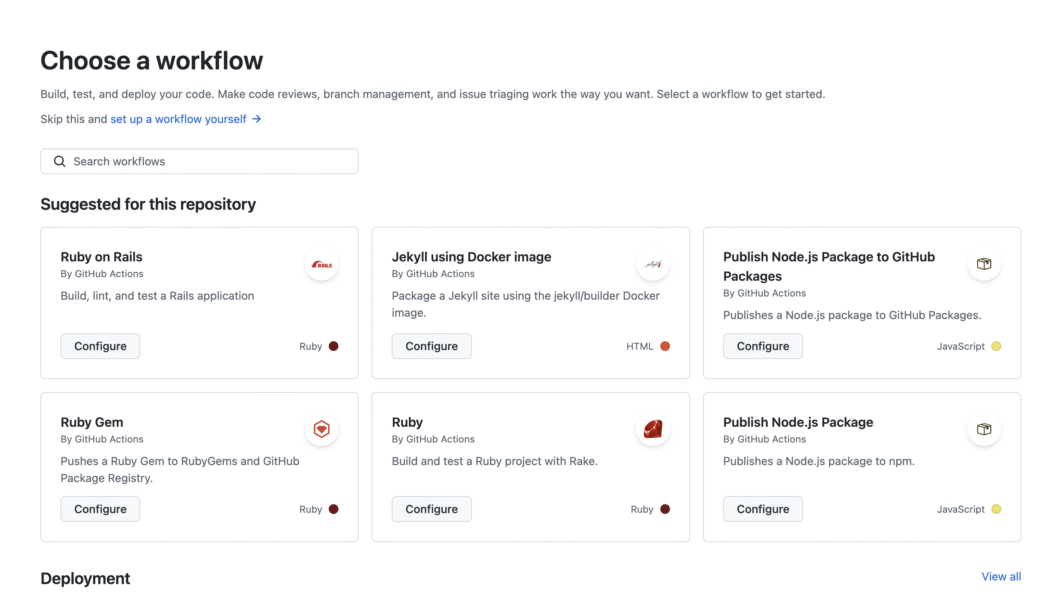
In GitHub Actions, everything is an action—this is the basic unit of work. If we want to clone the repository, we need to call the checkout action. This means you need to know or look for the action that does what you want, adding a bit of unneeded complexity.
- name: Checkout
uses: actions/checkout@4.2.2
In Semaphore CE, we also have starter workflows for different languages and frameworks.
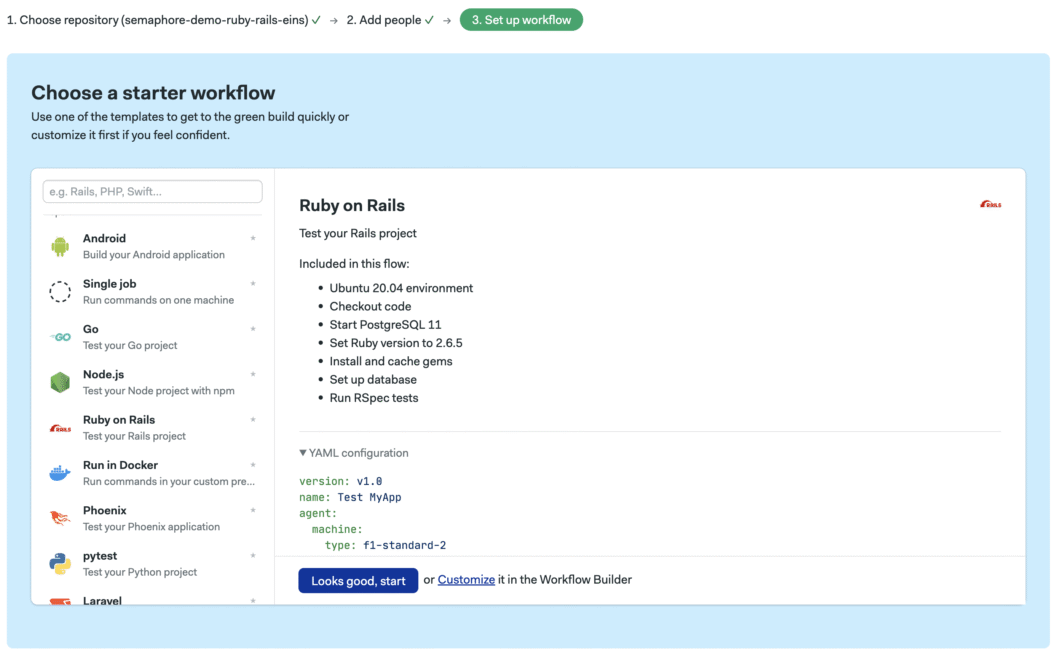
What makes Semaphore different is its built-in visual mode, called the workflow editor. A full visual editor lets you design, preview, and tweak pipelines in a GUI.
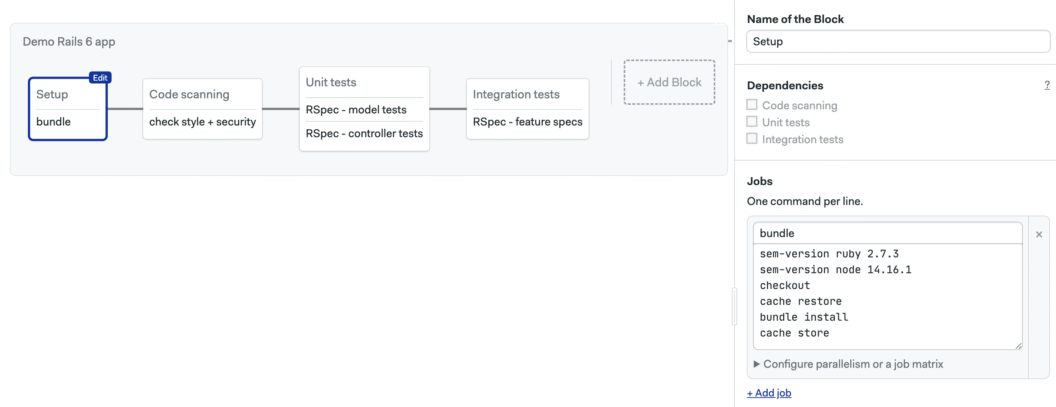
Behind the curtain, Semaphore uses its own YAML format, and while there’s really no need to edit the YAML by hand, you can edit it directly and Semaphore will work the same.
Feature Comparison
Let’s compare some of the most important features available on both platforms.
Git Support
GitHub Actions is integrated with GitHub—there is no way to connect it to other Git providers. It makes sense for GitHub, but maybe not for you, as it locks you into their ecosystem. GitHub has so far been a great digital citizen, but things can change, and if they do, moving out can be quite complicated.
Semaphore CE, on the other hand, works with GitHub, BitBucket, GitLab, and any SSH-accessible Git server (even headless ones). So you can pretty much plug in any Git provider without migrating your CI workflows and pipelines.
Monorepo support
Monorepos are repositories containing more than one project. They usually need special considerations when setting up CI, as they tend to be more complex and we don’t want to re-run all jobs when only one of the projects changes. That means we need some mechanism to filter the commit history in order to figure out what jobs to run in the CI.
GitHub Actions supports monorepos. In practice, we have two parameters we need to get right in order to work with monorepos:
- path filters
- fetch depth
Path filters on GitHub allow us to run a job when a file changes in a given path. For example, to run a job when a file in the frontend or shared folders changes, we can use:
on:
push:
paths:
- 'frontend/**'
- 'shared/**'
pull_request:
paths:
- 'frontend/**'This works for feature branches and pull requests. For pushes directly on the main trunk, we might also need to customize the checkout action by adding the fetch-depth parameter. This is because, by default, GitHub Actions only checks out the latest commit, so it might miss changes when a push contains several commits.
For example, this checkout action changes the default commit history to the last 5 commits:
- uses: actions/checkout@v4
with:
fetch-depth: 5 # Just enough for diffThis behavior means we need to get the fetch-depth right in order to get all the commits that are relevant to decide if a job must run. In practice, this might involve implementing custom logic or using specialized actions to handle the complexity of determining the proper comparison points.
Semaphore CE’s monorepo support revolves around the change_in function, which is executed automatically before any pipeline starts. change_in only needs a matching path to work—these paths support globbing and regular expressions. And we don’t need to supply a fetch-depth, as it will automatically use the most conservative strategy depending on what is contained in the Git push that triggered the pipeline.
For the main trunk, e.g. main or master, change_in will inspect all the commits contained in the push and compare changes against the list of paths. If any of the paths were affected, the job will run.

For pull requests and branches, change_in inspects the commit range starting at the common ancestor between the branches and the head of the pushed branch.

So, in all cases, we never miss relevant commits, and we can depend on Semaphore always running a job when at least one of the files in the path-matching list is modified, created, or deleted.
Test reports
A test reports dashboard provides a single place where we can see all the test results across all CI runs.
GitHub Actions does not have any test dashboard built in. You need to implement a third-party solution or get a plugin from the marketplace.
Semaphore CE has built-in test reports. It processes tests across all CI runs for a project and lets us filter results by duration and category, and we can search by name. It really provides a convenient place to view how your test suite is doing.
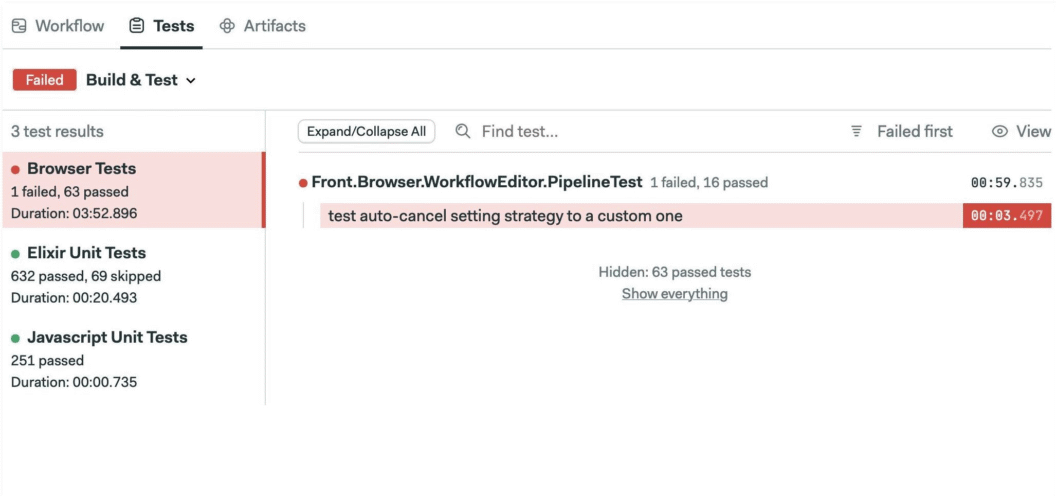
Markdown reports (custom reports)
Custom reports are a way to create a report with any helpful or important information related to our CI/CD workflows.
As with test reports, GitHub Actions does not have any way to create custom reports—we need to use a third-party tool or plugin.
Semaphore CE supports the creation of custom reports dynamically generated during runtime in the CI job. The feature is called Markdown reports because we can generate the reports using Markdown.
We can generate graphics with Mermaid.js such as Gantt charts, compute utilization metrics, dependency graphs, code coverage graphics, embedded images, tables… anything really. If we can render it with Markdown, we can create a report.
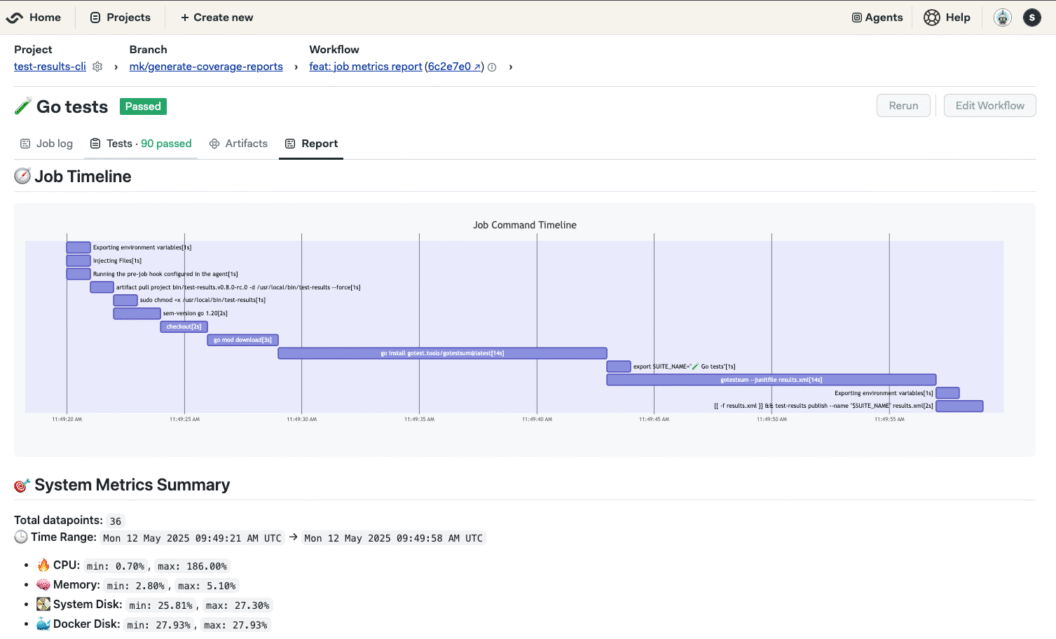
Notifications
Both GitHub and Semaphore can send notifications via Slack, and it’s quite easy to set up. Webhook-based notifications are also supported on both platforms.
In addition, GitHub supports email and push notifications in their mobile app.
| Notifications | GitHub Actions | Semaphore |
|---|---|---|
| ✅ | ❌ | |
| Mobile app | ✅ | ❌ |
| Slack | ✅ (via integrations) | ✅ (built-in) |
| Webhook notifications | ✅ | ✅ |
On-premise install
In order to fully compare GitHub and Semaphore, we need to cover the on-premise installation. We’re going to compare how easy and convenient it is to install GitHub and Semaphore in your own cloud or on-premise hardware.
License
Let’s start with the license. To install GitHub on-premise, we need a GitHub Enterprise Server license. This is a commercial license.
Semaphore CE, on the other hand, is distributed under Apache-2—a very permissive, free, and open-source license that allows you unlimited usage.
Hardware requirements
GitHub Enterprise Server is a self-hosted virtual appliance. For production-scale use (10 to 3,000 users), you’ll need at least 8 vCPU and 64 GB RAM, plus two storage volumes: 200 GB for root and 300 GB for data. Larger instances scale up to 20 vCPU and 160 GB RAM for over 8,000 users.
Semaphore CE can be installed on a Ubuntu machine or Kubernetes cluster, with a minimum of 8 CPUs and 16 GB RAM for the control plane and spare capacity to serve dozens of users.
If you want to scale up, install Semaphore on a Kubernetes cluster. The capacity of the cluster is going to be the capacity of your CI jobs.
Software requirements and installation
GitHub Enterprise Server requires downloading the appropriate image (OVA for VMware, AMI for AWS, VHD for Azure, QCOW2 for OpenStack), provisioning a VM with your DNS and network settings, attaching your data volume, then uploading your license and completing setup via the management console.
Semaphore CE, on the other hand, needs less exotic software. We need a domain, a public IP, and either k3s or a Kubernetes installation. The installation process itself is done using Helm and takes about 10–15 minutes.
Which Tool Should You Choose?
Both GitHub Actions and Semaphore CE offer solid CI/CD capabilities, but they serve different priorities.
If your team lives inside GitHub and values deep integration, convenience, and a robust marketplace of pre-built actions, GitHub Actions is a logical choice. However, this comes with trade-offs: vendor lock-in, limited Git provider support, and reliance on third-party tools for anything not included in the basic GitHub Actions experience.
If you value open source licensing, the ability to see and modify the tools you use, the flexibility to choose Git providers, visual definition of pipelines, and a feature-packed solution with all the features you need to perform CI/CD, then Semaphore CE might be the right fit for you. Simply install




